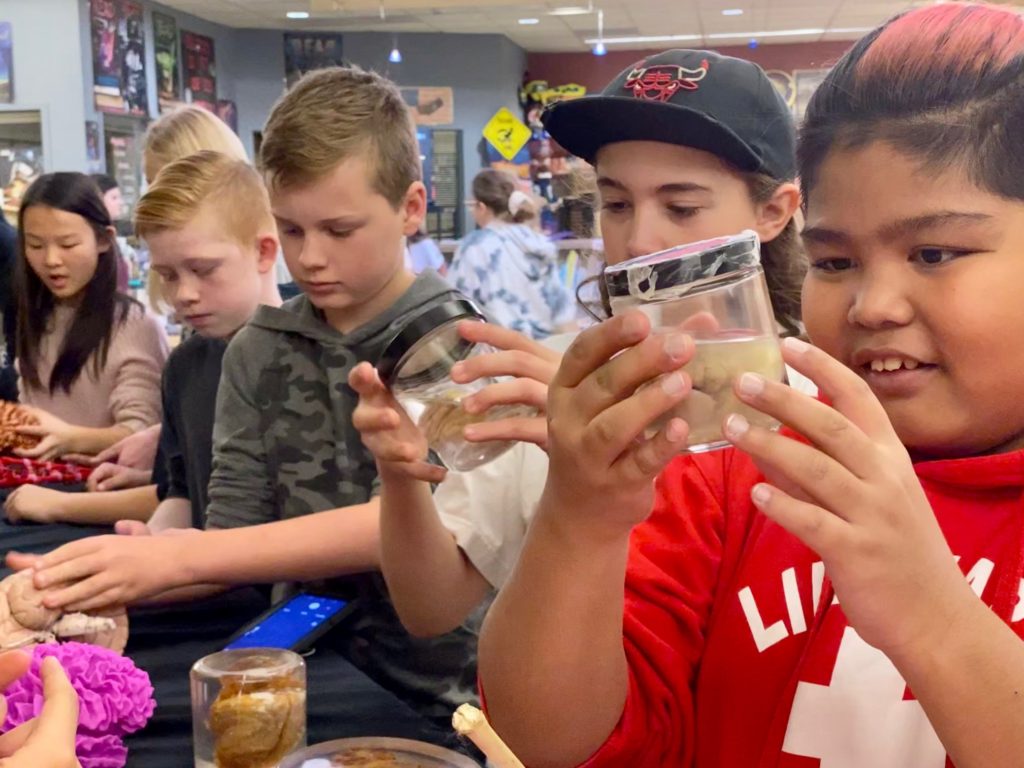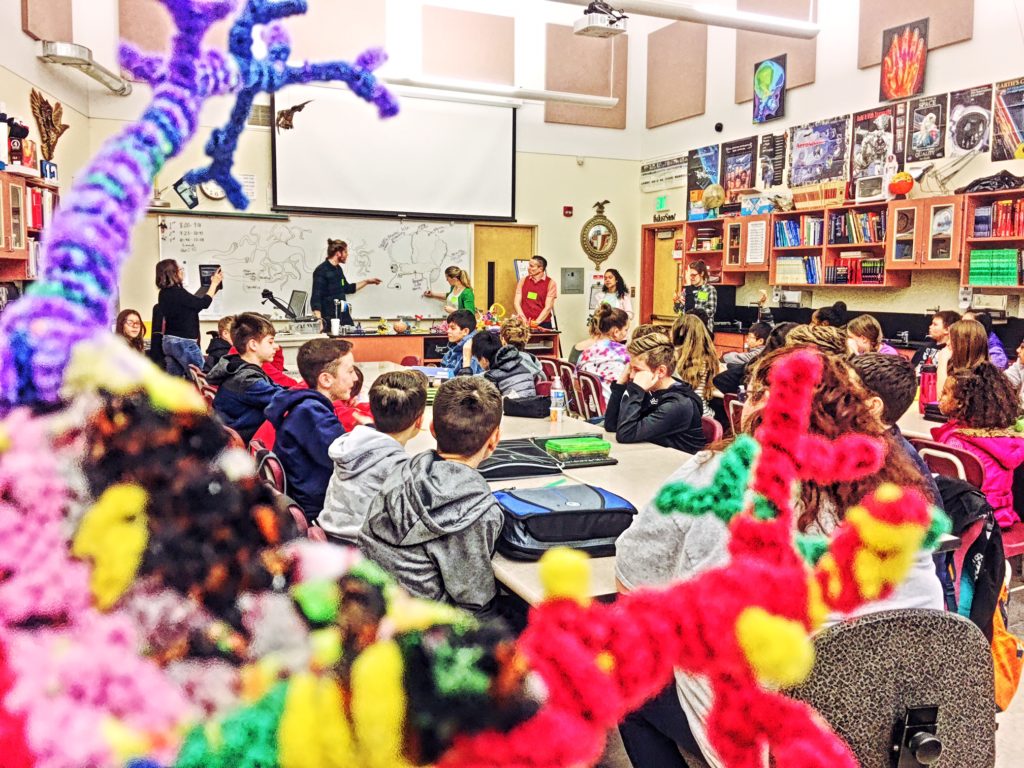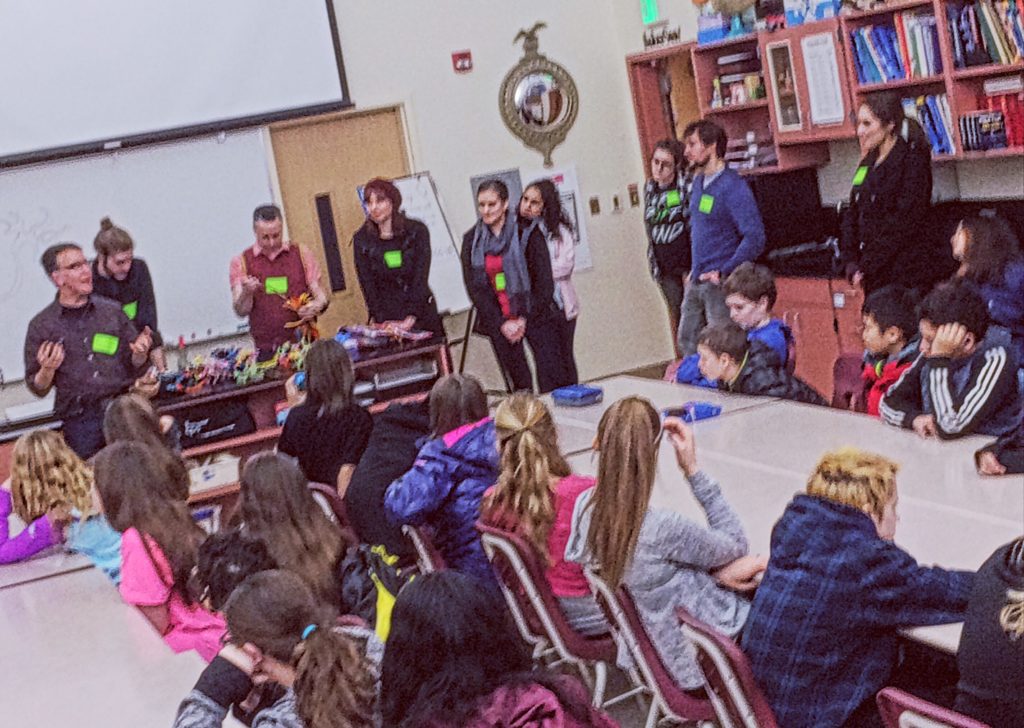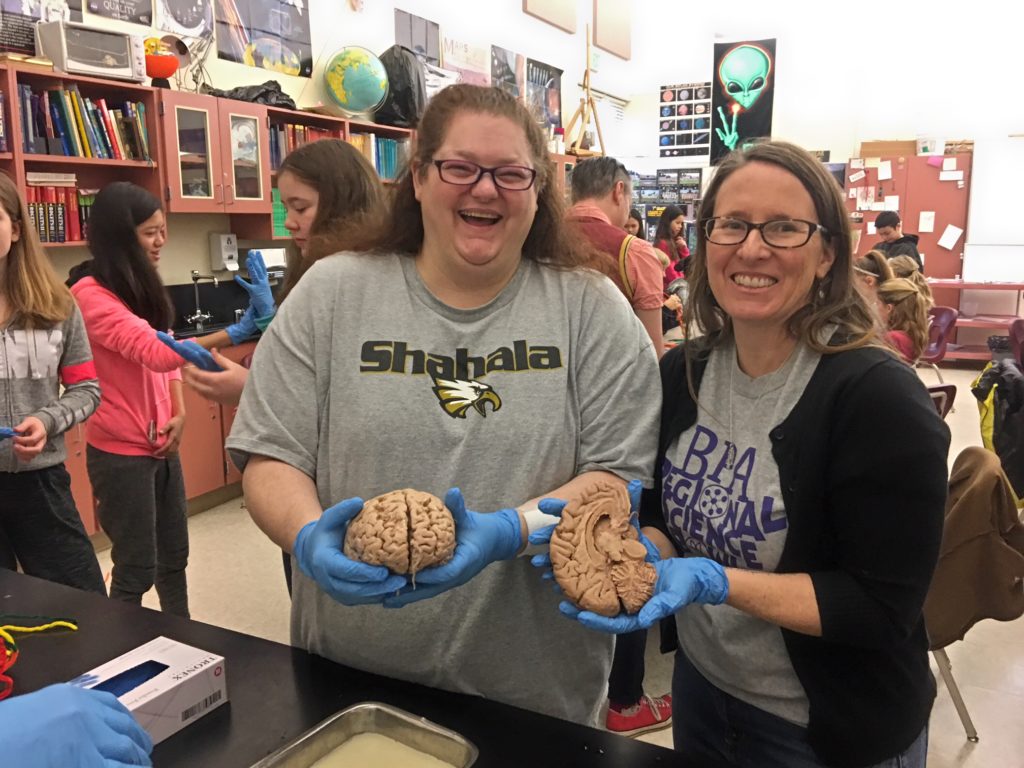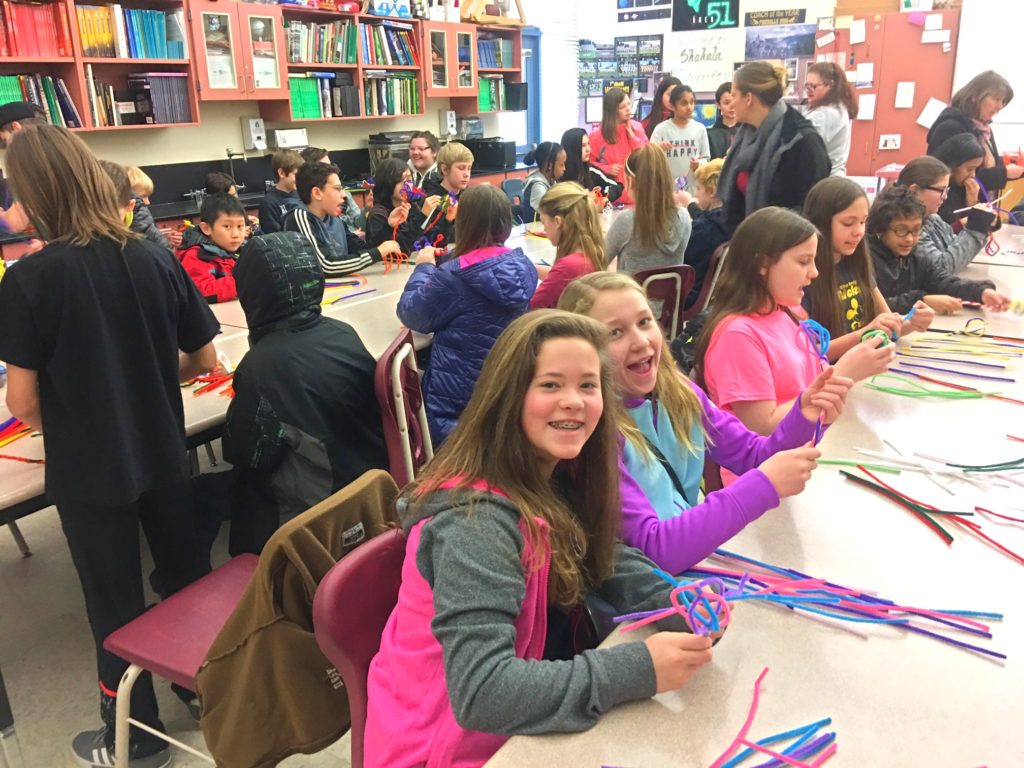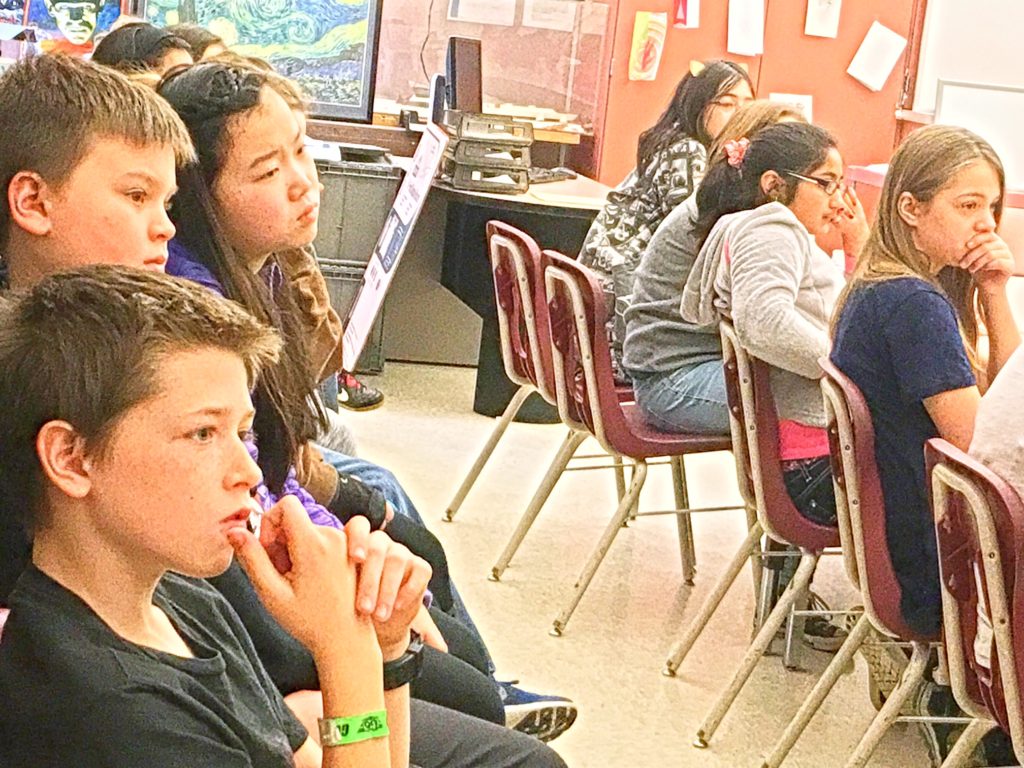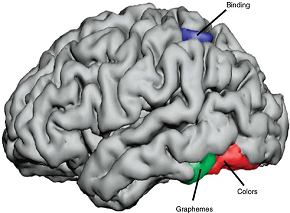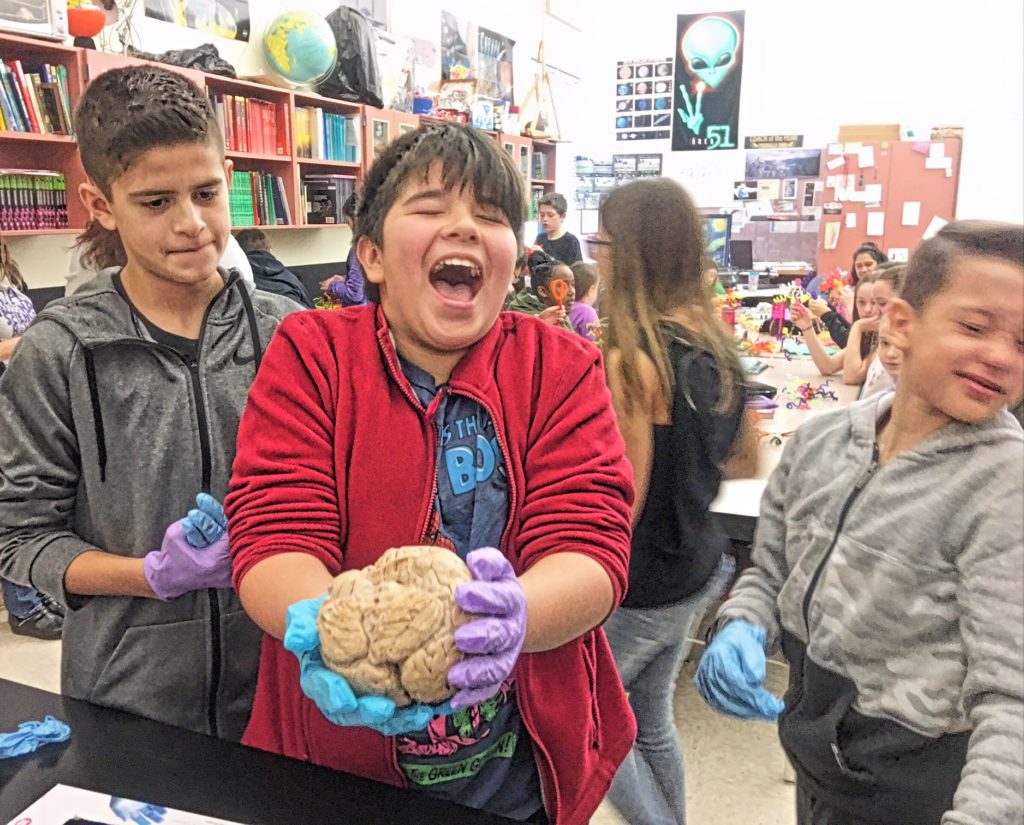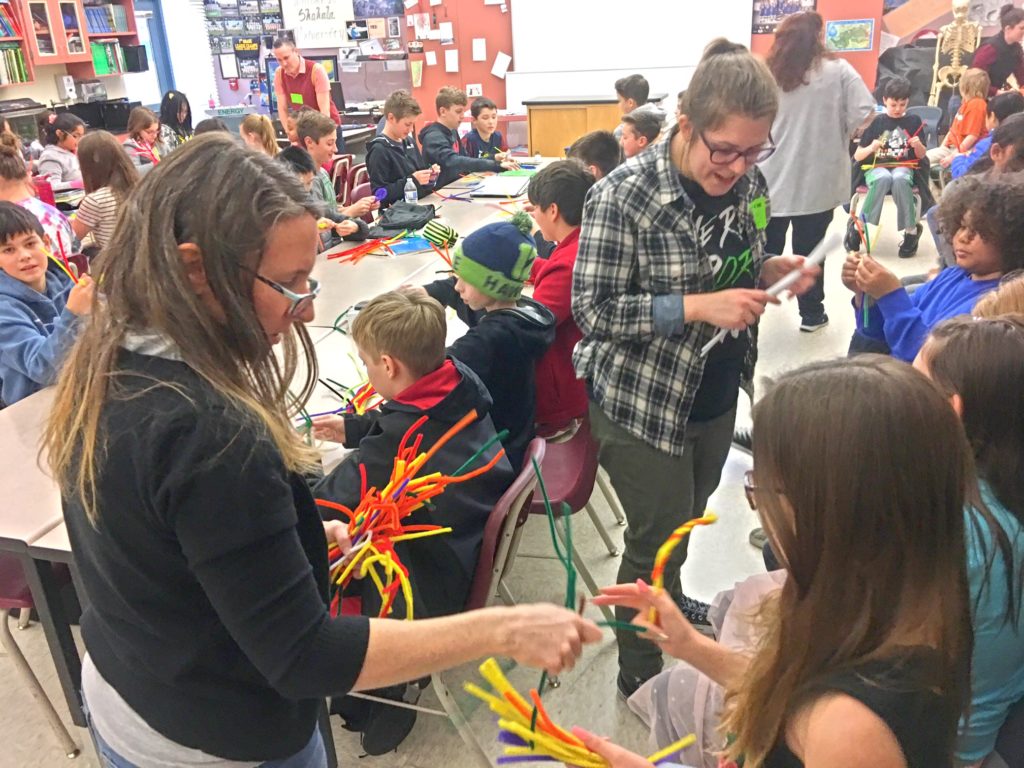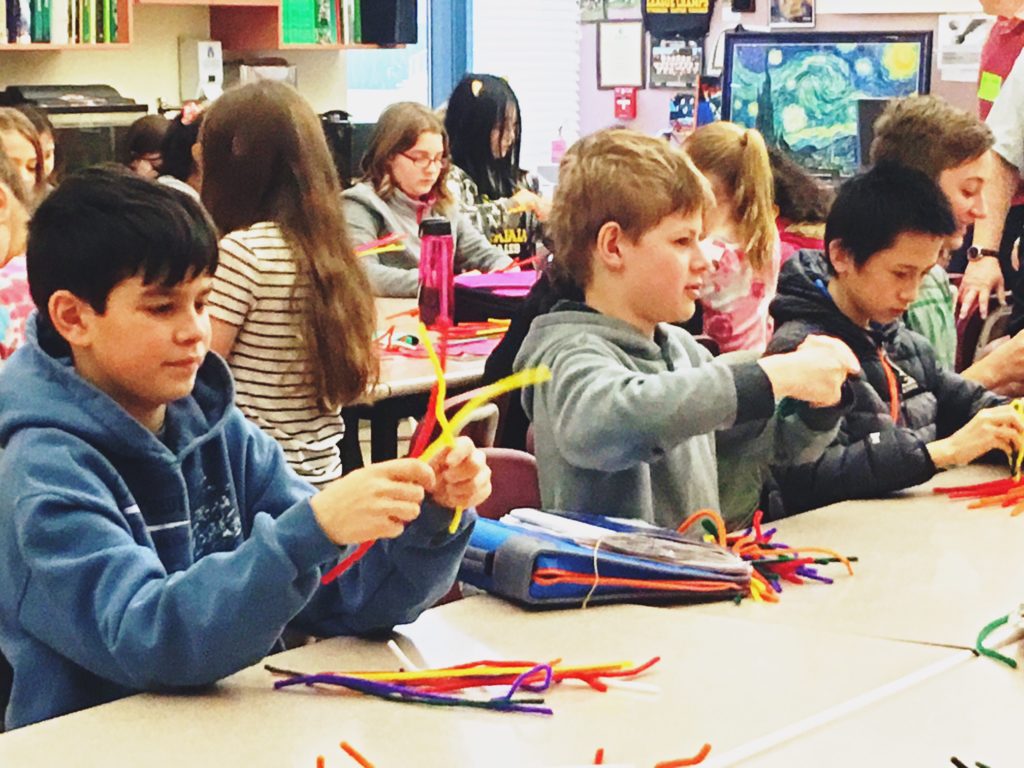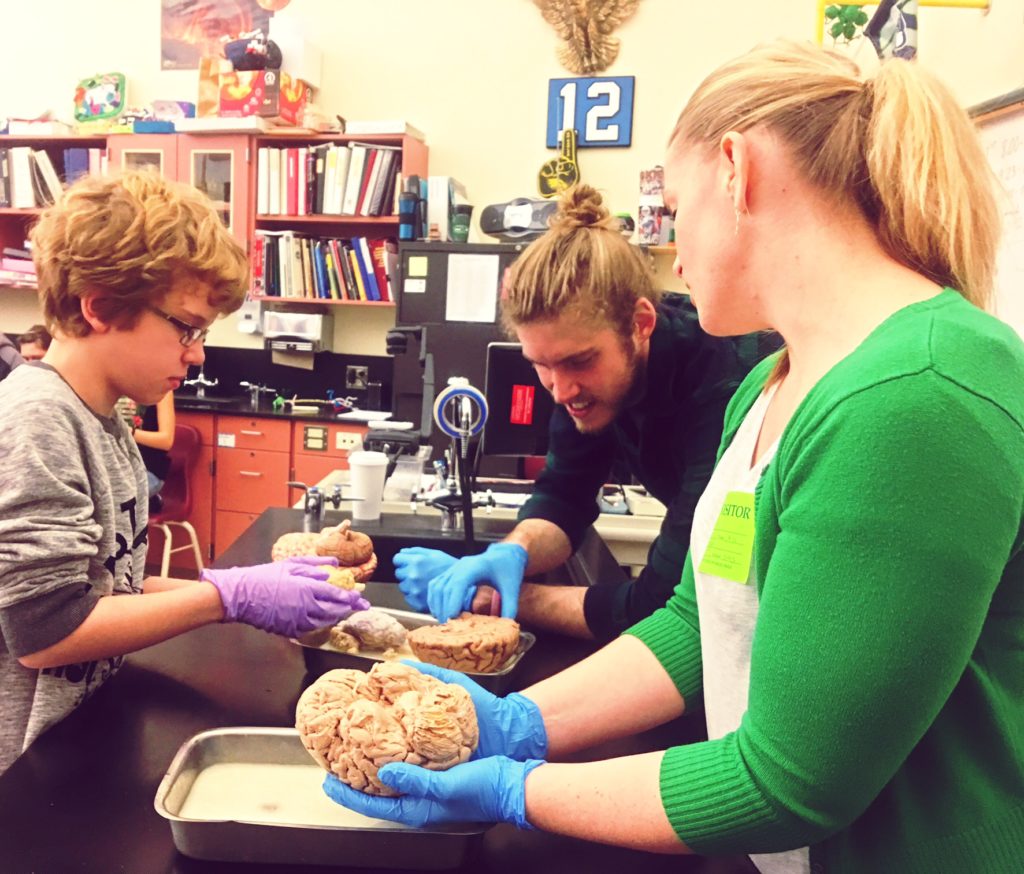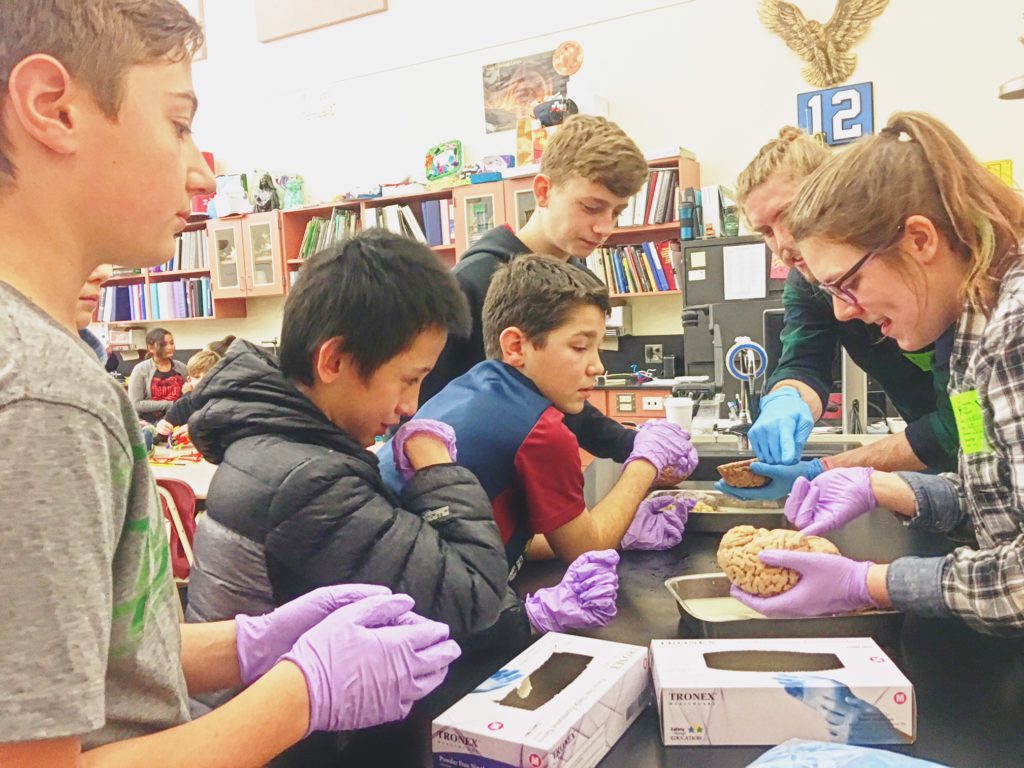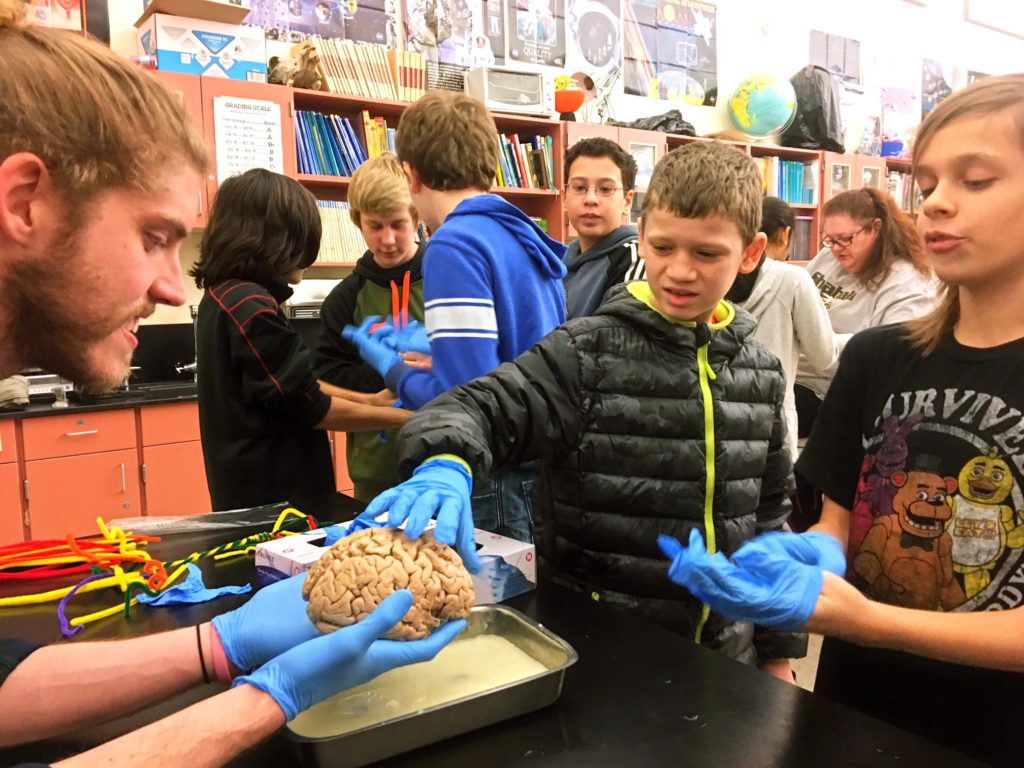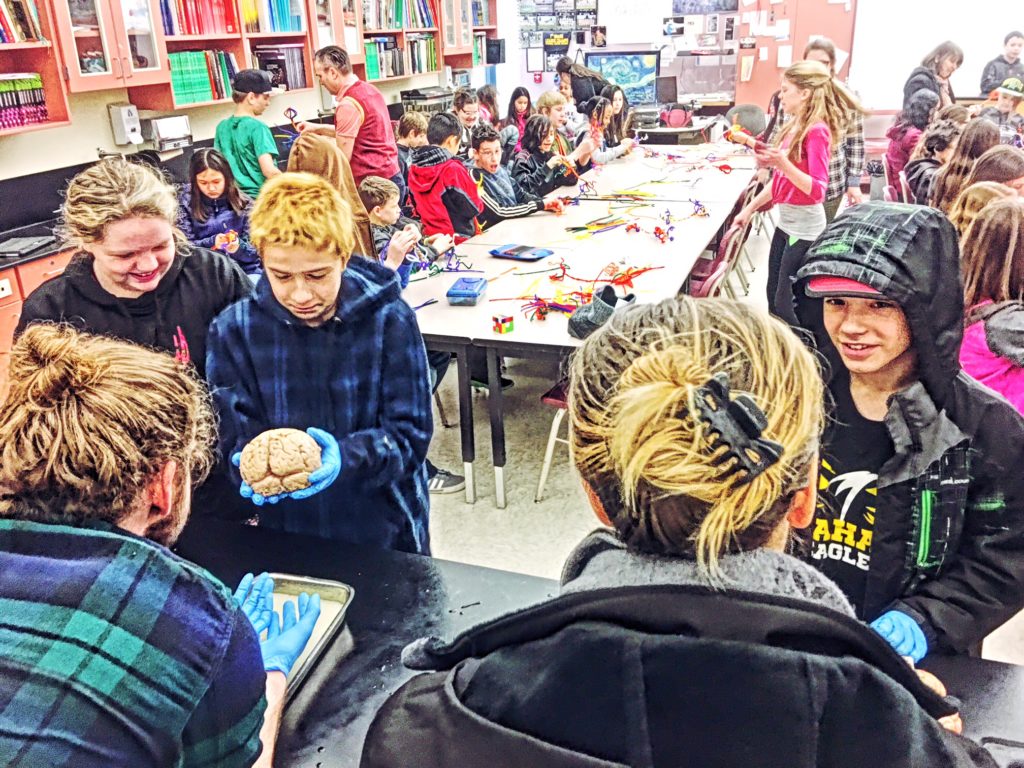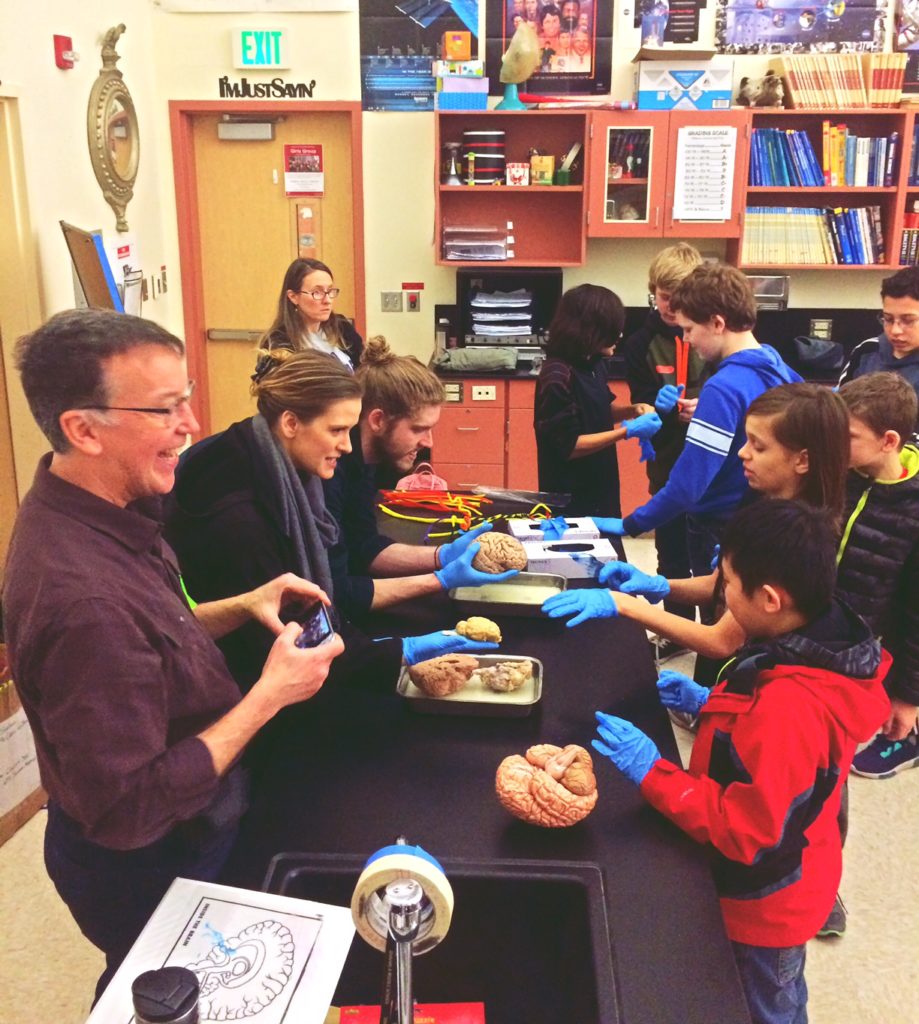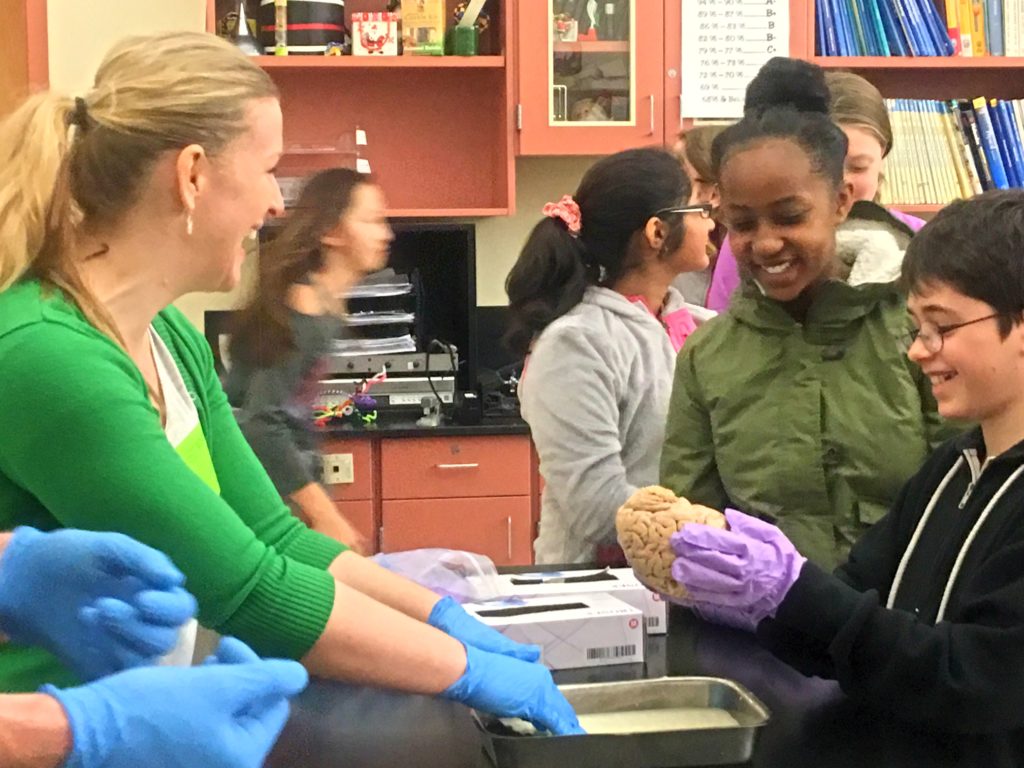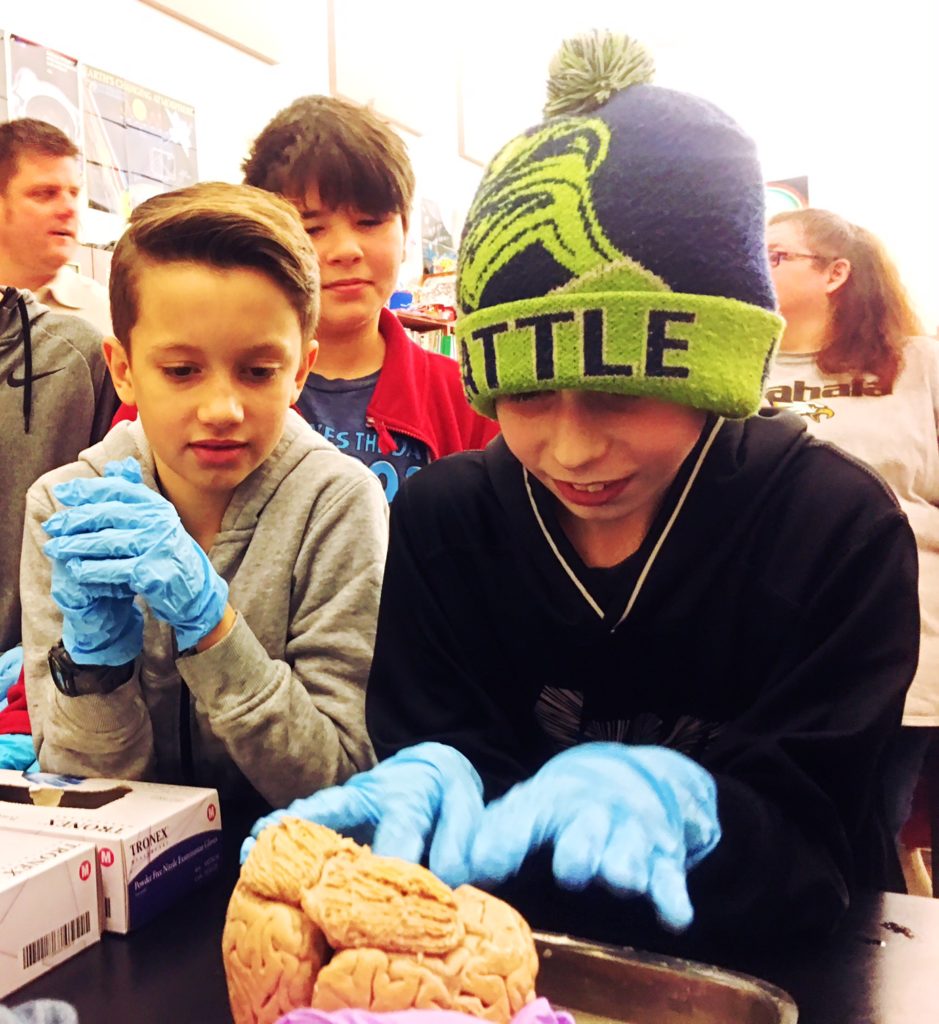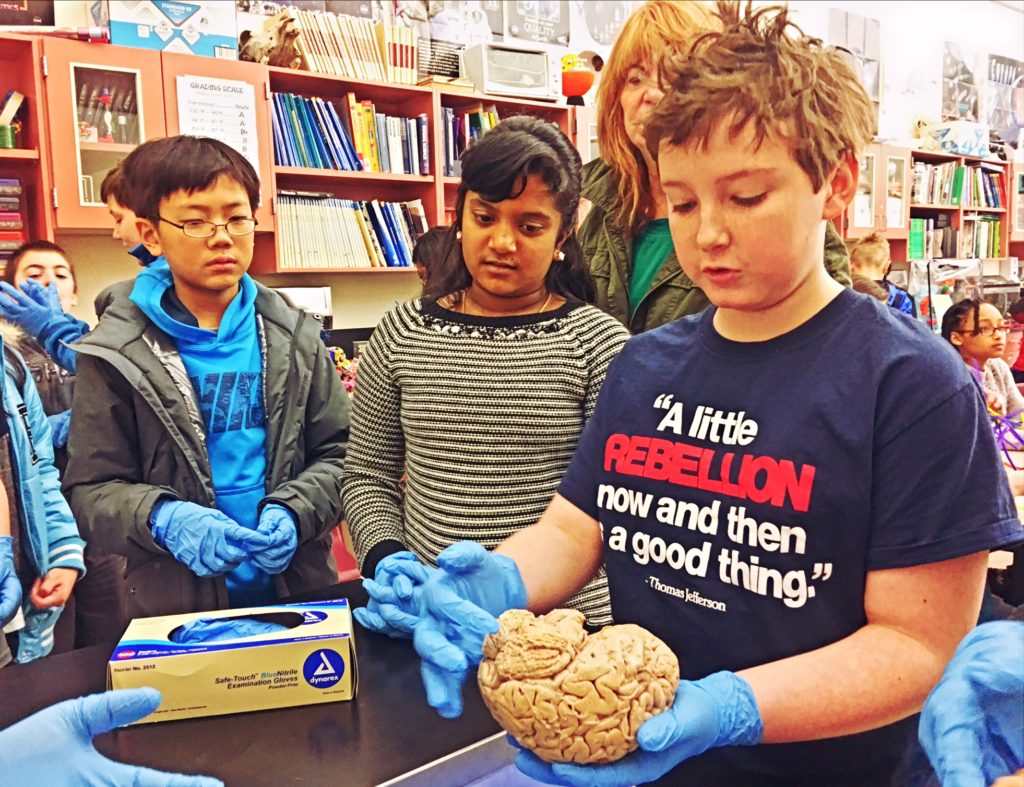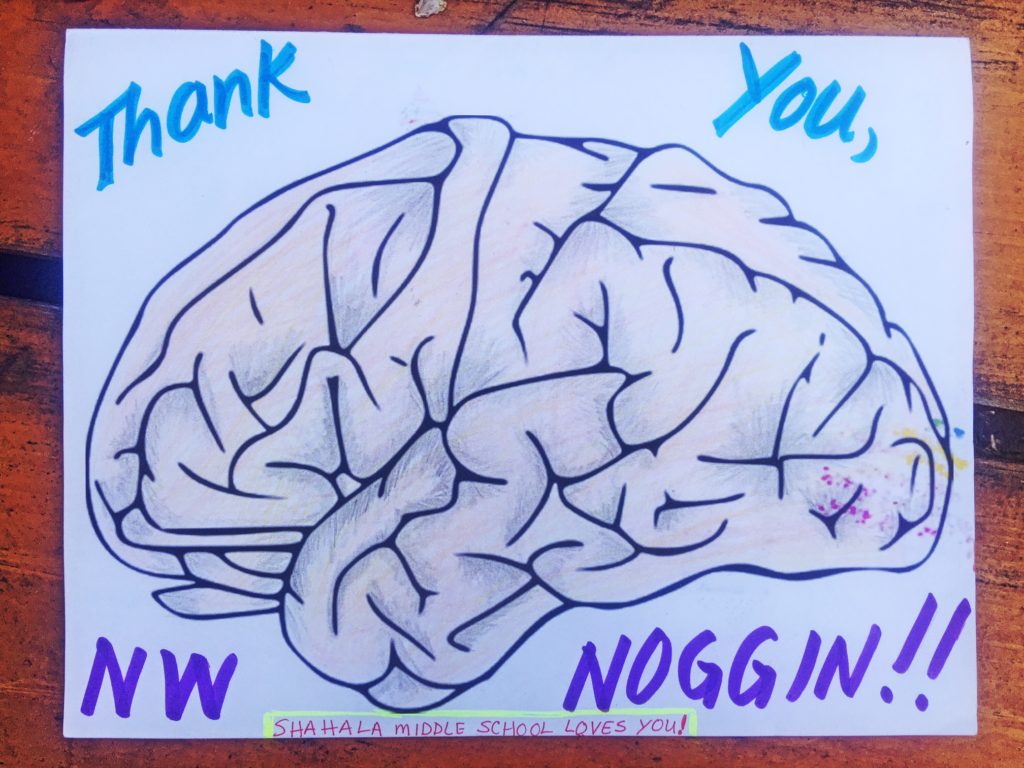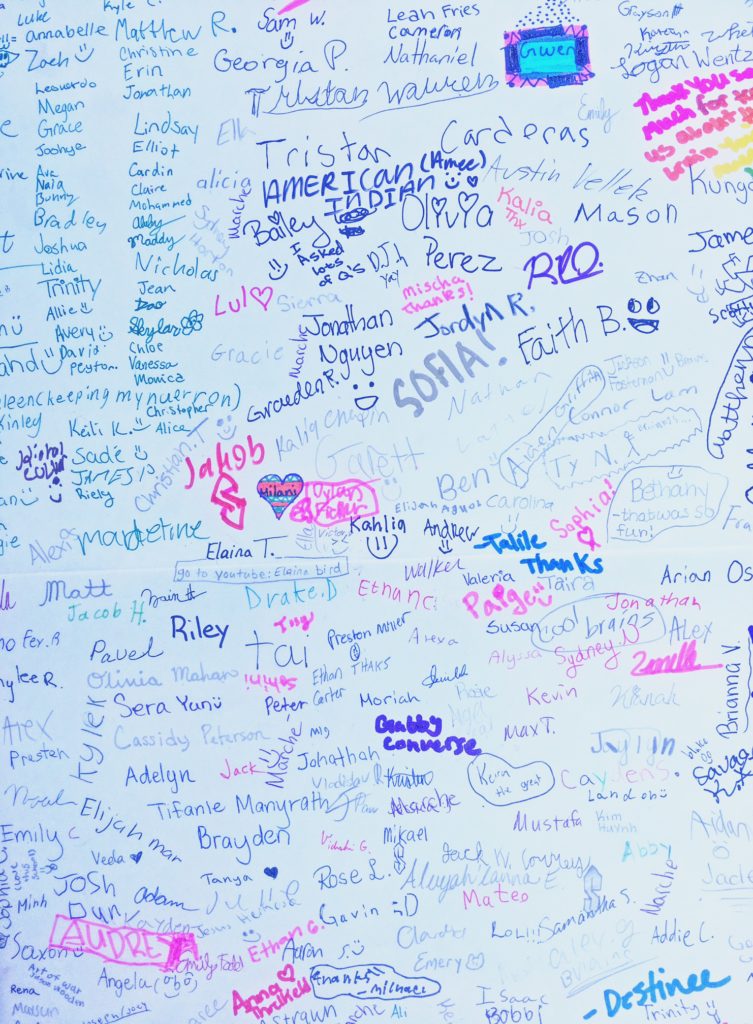Another big day of noggins and art at Shahala Middle School, in Evergreen Public Schools, this time with more than 200 5th graders!
We also welcomed a larger crew of enthusiastic volunteers, including Scott Jones from Behavioral Neuroscience at OHSU, Andrea Anaya, Aliese Poole, Jessica Patching-Bunch and Sulema Rodriguez from Psychology at Portland State University (PSU), and Christina Williams, Kim Engeln, Matthew Carlisle and Nick Dunn from the regional branch campus of WSU…
Kids and teachers had questions about the number of neurons in the human brain, and how development involves a significant drop from close to 200 billion at birth down to around 86 billion in the young adult..!
EXPLORE MORE: The human brain in numbers
Students were particularly curious about synesthesia, or the mixing of sensory experiences, which occurs when one type of sensory stimulus provokes not only that related perception, but also another perceptual modality, or quality.
For example, people with grapheme-color synesthesia (where individual letters or numbers are perceived as having specific associated colors, even when the letters are presented as black text) exhibit fMRI activation of BOTH text and color areas of the visual system when they view letters/numbers. Non-synesthete’s, in contrast, only show activation of text regions (in the ventral temporal lobe) when shown the same black text…
EXPLORE MORE: If you perceive it, a specific structural part of your brain is busy processing information
It turns out that we actually had THREE Shahala students in our first classroom of 60 kids who had grapheme-color synesthesia! And we explored this further, discovering that one student saw A’s as bright red, while another perceived them as bluish purple. These associations appear idiosyncratic, and specific to each individual synesthete; however, there may be some order to these experiences…
LEARN MORE: Grapheme learning and grapheme-color synesthesia: toward a comprehensive model of grapheme-color association
Interestingly, there is evidence to suggest that infants may have far more multi-modal, synesthetic experiences than most toddlers, middle schoolers and adults. However, by 18 months or so, sensory experiences typically lead to neural network changes that more consistently route different sensory inputs along segregated, developing perceptual networks…
LEARN MORE: Synaesthetic Associations Decrease During Infancy
Our able volunteers took turns answering more compelling questions, and explained what they studied and researched at area universities. We made it clear that anyone excited by what they were discovering about the relationship between brain structure and function had options for furthering those interests through high school, college and multiple graduate programs in neuroscience, psychology and art..!
Then we dove into brain viewing and pipe cleaner neuron building, and our developing science educators had many opportunities to speak with students in smaller groups, answering questions about topics ranging from brain imaging techniques to ADHD, autism and the neurophysiology of memory, motivation and sleep!
“Act as if what you do makes a difference. It does.” – William James
Many thanks again to Shahala Middle School, including teachers Christine Sullivan and Cassie LeBlanc! And thanks as always to our tireless outreach volunteers, who are willing to share their growing knowledge and expertise with young people in Portland, Vancouver, and beyond…
LEARN MORE ABOUT OUR FIRST VISIT TO SHAHALA…
SYNAPSES @ SHAHALA
Thank you card from Shahala students! GREAT brain!
More Noggin @ Shahala
Synapses @ Shahala!
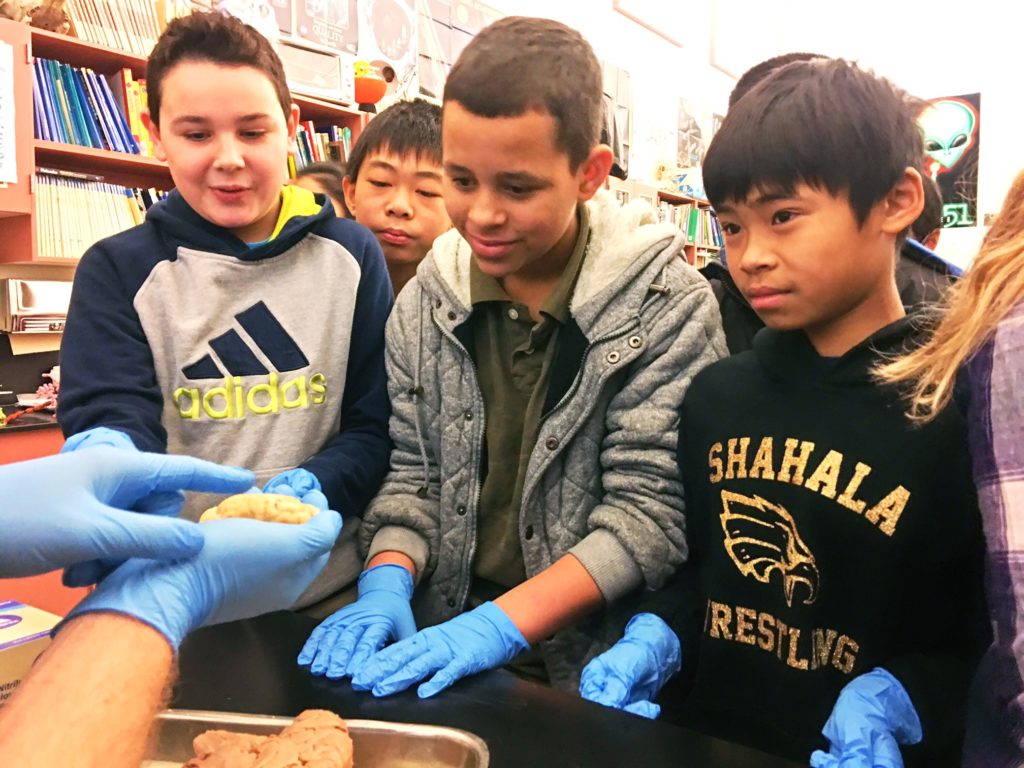
Trickster Brains @ Shahala
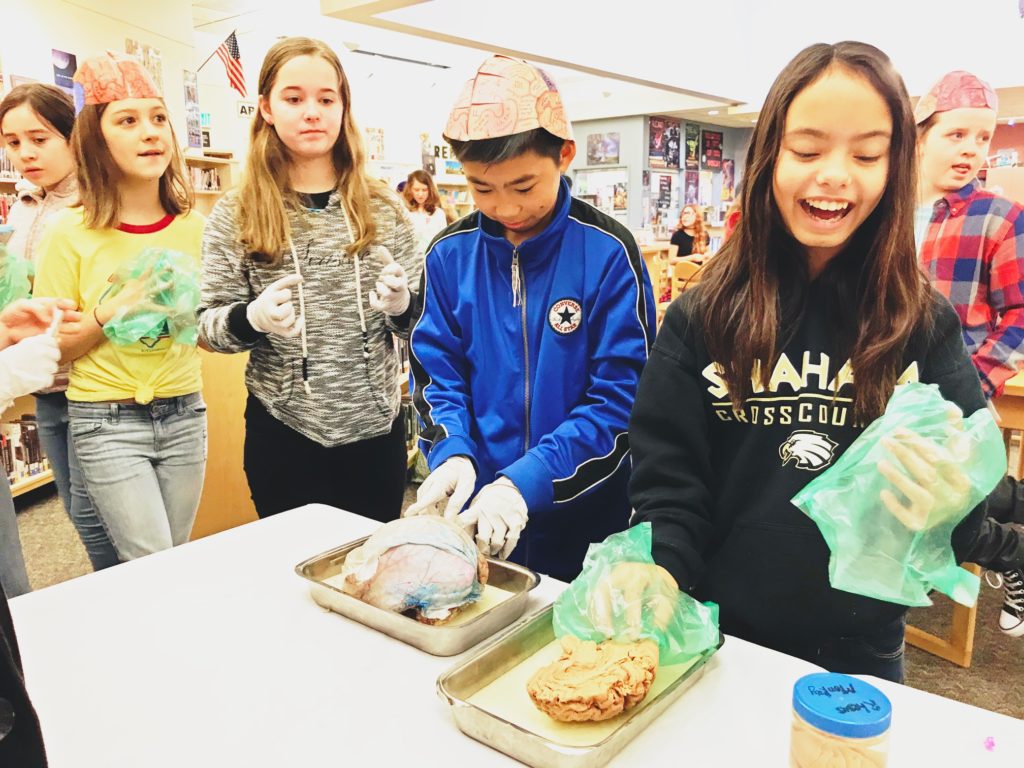
Freedom @ Shahala
